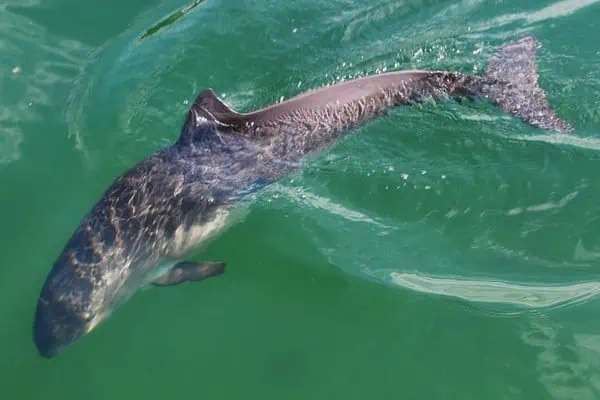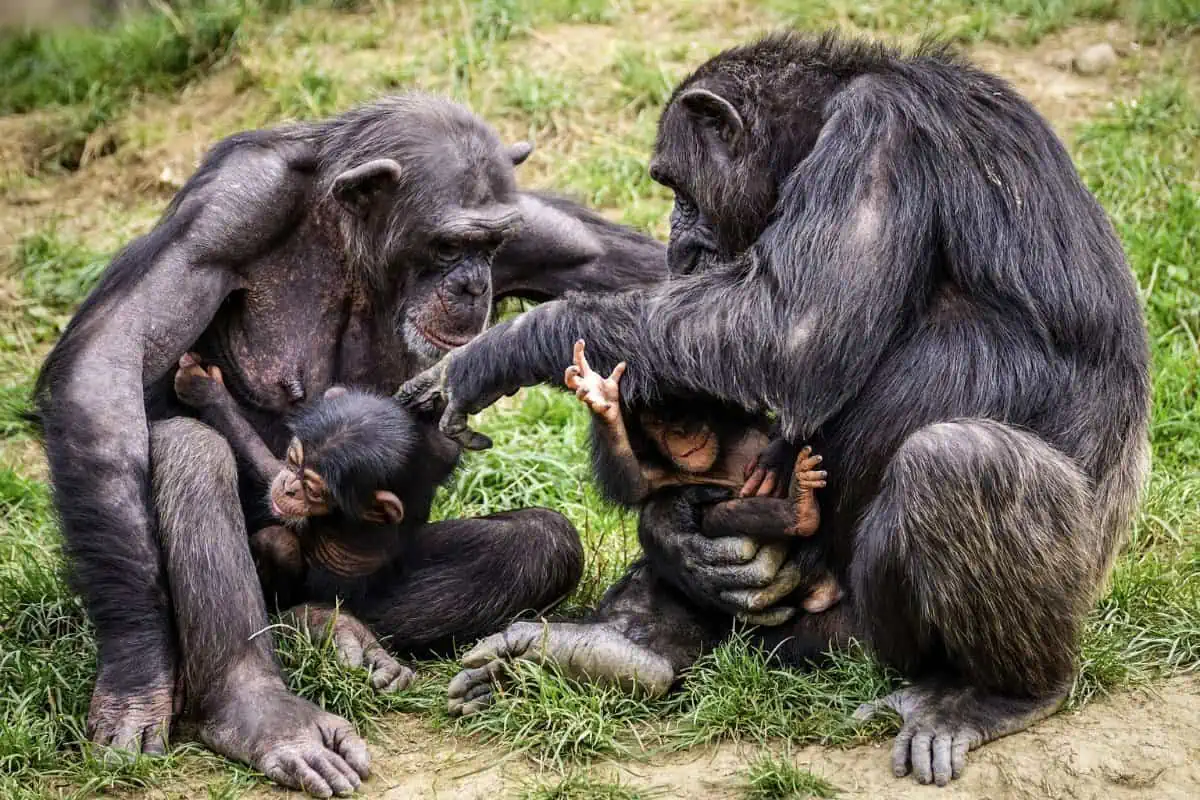Unlike other species, certain animal species only give birth to a single progeny, challenging the conventional wisdom on reproduction. Whether they live in the deep ocean or in the lush jungles, these animals that have one baby at a time captivate us with their excellent reproductive techniques. Let’s learn a bit more about these animals, and then look at a list of examples.
What are monotocous animals?
Monotocous animals are species that typically give birth to one offspring at a time. This pattern is common in animals like elephants, where significant care and resources are required to raise the young.
Adaptations to monotocous reproduction are seen in various creatures, including kangaroos and certain marine mammals. These specializations enable the parent to concentrate all its resources on a single offspring, ensuring its survival and growth.
This reproductive strategy, while limiting in numbers, often leads to a higher survival rate for the young. The focused attention on a single offspring underscores a delicate balance between quality and quantity in animal reproduction.
13 Animals that have one baby at a time
Now that we know what it means to be monotocous and why these animals only have one child at a time, let’s look at some examples!
1. Chimpanzee

Scientific Name: Pan troglodytes
When it comes to the actual birth of offspring, female chimpanzees typically give birth to only one baby at a time. This is due to the single birth pattern being a product of the high investment of care that chimpanzee mothers give to their infants, as raising a baby chimpanzee requires a significant investment of time and resources.
The young chimp relies on its mother for the first few months of life up to its juvenile years. The mother is also responsible for teaching them essential skills and social behaviors to survive in their environment.
2. Elephant

Scientific Name: Loxodonta africana
Due to their extended gestation period of 1.5–2 years, elephants, the largest living terrestrial creatures, normally only have one baby at a time. The high level of parental investment in the calf, who may remain dependent on the mother for several years as it learns basic survival abilities, is also associated with the single birth pattern.
Due to the rarity of twin births, it’s clear that single births are by far the most common type of birth.
3. Horses

Scientific Name: Equus caballus
Horses are among the few animals with only one offspring at a time. These animals have a gestation period of about 11 months, and most mares only have one baby at a time. While twin pregnancies can occur, they’re rare in horses.
Almost immediately after birth, foals are able to stand and run. They’re weaned from their mothers between the ages of four and six months, attain maturity at four years old, and continue growing and developing physically until they’re about six years old.
4. Hippopotamus

Scientific Name: Hippopotamus amphibius
Another species that produces a single offspring at a time is the hippopotamus. Female hippos, called cows, have a gestation period of approximately eight months and they give birth on land or in shallow water to a single calf, which weighs around 50 kg (110 lbs) and measures about 127 cm (4.17 ft) in length.
You’ll also see these calves are carried on their mothers’ backs through deep water by their fiercely protective mothers. Hippos use a K-strategy of reproduction, having a single healthy offspring every two years or so.
5. Dolphins

Scientific Name: Delphinus delphis
Most dolphin species, including the common dolphin, have a single offspring per birth. The gestation period varies among dolphin species, ranging from 11 to 17 months.
When giving birth, dolphins usually deliver their calves’ tails first. Dolphins can start having sexual relationships at a younger age than many other mammals, even before they reach sexual maturity.
Dolphins are known for their non-reproductive sexual behavior and for having sexual encounters with dolphins of other species. To improve their chances of reproducing, male dolphins may engage in aggressive behavior toward females and other males.
6. Impala

Scientific Name: Aepyceros melampus
Impalas are one species of antelope that give birth to just a single offspring at a time. The female impala gives birth alone, apart from the herd, after a six- to seven-month pregnancy.
After giving birth to a single calf, the mother instinctively hides it from danger. Following four to six months of nursing by its mother, the calf is introduced to the rest of the herd as an adult. Male offspring often disperse to form bachelor herds, while females often stick together.
7. Rhinos

Scientific Name: Ceratotherium simum
Among the animals that are a part of this group are rhinos. Male rhinos reach sexual maturity between the ages of 10 and 12 years, while females do so between the ages of 6 and 7.
During courtship, the male follows the female and blocks her path until she is ready to mate. A white rhino gives birth to a single calf that weighs between 40 and 65 kg (88 and 143 lbs) after about 16 months of pregnancy.
The mother cares a lot about her calf and will fight hard to protect it. Calves are weaned when they’re about two months old, but they may still nurse for more than a year. The birth interval for white rhinos is typically between two and three years.
8. Sea lions

Scientific Name: Zalophus californianus
Although sea lions’ breeding seasons are species-specific, there are often certain periods of the year when they reproduce. Male sea lions engage in territorial battles and elaborate displays to mark their territory and attract females.
Females show up a week or so later, and they only have one pup. Male sea lions are known to mate with more than one female at a time, and to maximize their odds of fathering a child, some males resort to competitive methods like resource-defense polygyny.
9. Cattle

Scientific Name: Bos taurus
Cattle, commonly found on farms, typically give birth to a single calf. Female cattle usually give birth for the first time when they’re about 2 or 3 years old, and birth timing is carefully coordinated with nutritious food. The average time between successive births, known as the calving interval, is approximately 391 days.
10. Wildebeest

Scientific Name: Connochaetes gnou
Wildebeests, like the blue and black wildebeest, can give birth to just one. Breeding happens briefly after the rainy season, and the calves quickly become active and join the herd to ensure their survival.
Female wildebeests have an estrous cycle that spans approximately 23 days, while their gestation period typically lasts between 250 and 260 days. Newborn calves weigh around 21 kg (46 lbs) and quickly gain the ability to stand and move.
11. Porpoises

Scientific Name: Phocoena phocoena
Porpoises are also known for having just one young during each birth. They’re small cetaceans found in coastal areas and estuaries, and are usually solitary, but they can sometimes be spotted alone or in small groups of up to five individuals. Female porpoises reach sexual maturity at a young age and can give birth annually for multiple years in a row.
The gestation period for them lasts about 10-11 months, with the majority of births happening during the late spring and summer seasons. Calves are separated from their mothers after 8-12 months, while porpoises typically live for 8-13 years.
12. Giraffes

Scientific Name: Giraffa camelopardalis
Giraffes are among the animals in this group, with a gestation period of typically 400-460 days, with the rare occurrence of twin births. The mother cow gives birth while standing, and the newborn calf gracefully lands on the ground.
In just a few hours, the calf learns how to run and looks almost identical to a one-week-old giraffe. Calves stick by their mothers’ side and form nursery herds to stay safe, gaining their independence at around 14 months old.
13. Lemur

Scientific Name: Lemur catta
The ring-tailed lemur gets busy breeding from mid-April to mid-May, with a gestation period of approximately 135 days. Females typically give birth in September or occasionally October, and twins can sometimes happen, although it’s more common to have just one offspring.
Newborn lemurs are lovingly carried by their mothers, first on their chests and then on their backs. After two months, they begin munching on solid food, and by five months, they’re completely weaned.

Louise writes about a wide variety of topics including wildlife, animals, and nature. She’s developed a growing interest in animal biology and categorization due to her fascination with how they interact with one another and with their surroundings.
